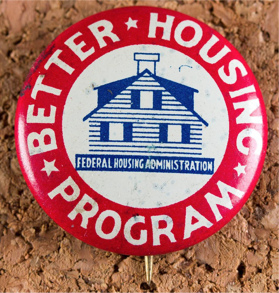Physical Address
304 North Cardinal St.
Dorchester Center, MA 02124
Physical Address
304 North Cardinal St.
Dorchester Center, MA 02124

The government exercises tremendous power over residential design in the US. Its influence is nearly invisible, because it works through complex financing programs, insurance incentives, and secondary markets. These mechanisms go unnoticed, but their effect is hard to miss—they remade the United States into a nation of sprawling suburbs. This is the second post in a series about government policies that encouraged suburban growth in the US. You can find the first post here. What image springs to mind when you picture “federally subsidized housing”? Most people imagine a low-income public housing tower, a homeless shelter, or a shoddy apartment building. Nope—suburban homeowners are the single biggest recipient of housing subsidies. As a result, suburbs dominate housing in the United States. For decades, federal finance regulations incentivized single-family homes through three key mechanisms: Insurance, National mortgage markets, and New standards for debt structuring The housing market hides these details from the typical home buyer. As a result, most people are unaware of these subsidies. But their effects are striking—they determined the location and shape of development across America for generations. A New Deal to restore the housing industry Debt has a negative connotation these days. Credit cards, student loans, and auto loans are the anchors that keep many Americans in debt for most of their life. Meanwhile, we view mortgages very differently—they are seen as an investment, a symbol of adulthood, and a sign of financial stability. This was not always the case. In the early 1900s, mortgages were just like any other kind of debt. Nowadays payments are spread out over decades, but back then they came due all at once after a few years. Most people didn’t have enough cash at the end of the term. It was standard to pay back some and negotiate a new loan for […]
One of my favorite new blogs, Rationalitate brought up a topic that I have spent much time thinking about, The Great Depression and Public Roads: In a time before the widespread adoption of income and sales taxes, property taxes made up the lion’s share of local government revenues: two-thirds of all revenue according to Dick Netzer, and over 90% of all taxes levied in cities of more than 30,000 according to David Beito. …property owners and renters were subsidizing roads for the benefit of the wealthy. Real estate developers who ran private forms of mass transit (mostly streetcars) and who were in direct competition with government-financed roads were some of the biggest payers of taxes, which makes the transfer especially ironic. It is a tragic coincidence that big government policies became popular during the same era as the automobile. History books champion Roosevelt and his New Deal, but few are willing to attribute our dependence on oil to the progressive policies that exploded during the Depression and continued through Eisenhower’s Interstate Highway System and on to this day. The big government solutions to “create jobs” drew resources from productive sources to fund projects that burdened future generations with the costs of maintenance, debt repayment, and auto dependency, as well as the abandonment of urban areas and rail infrastructure for an extended time. This is a topic that deserves more attention. One could write a book on it.